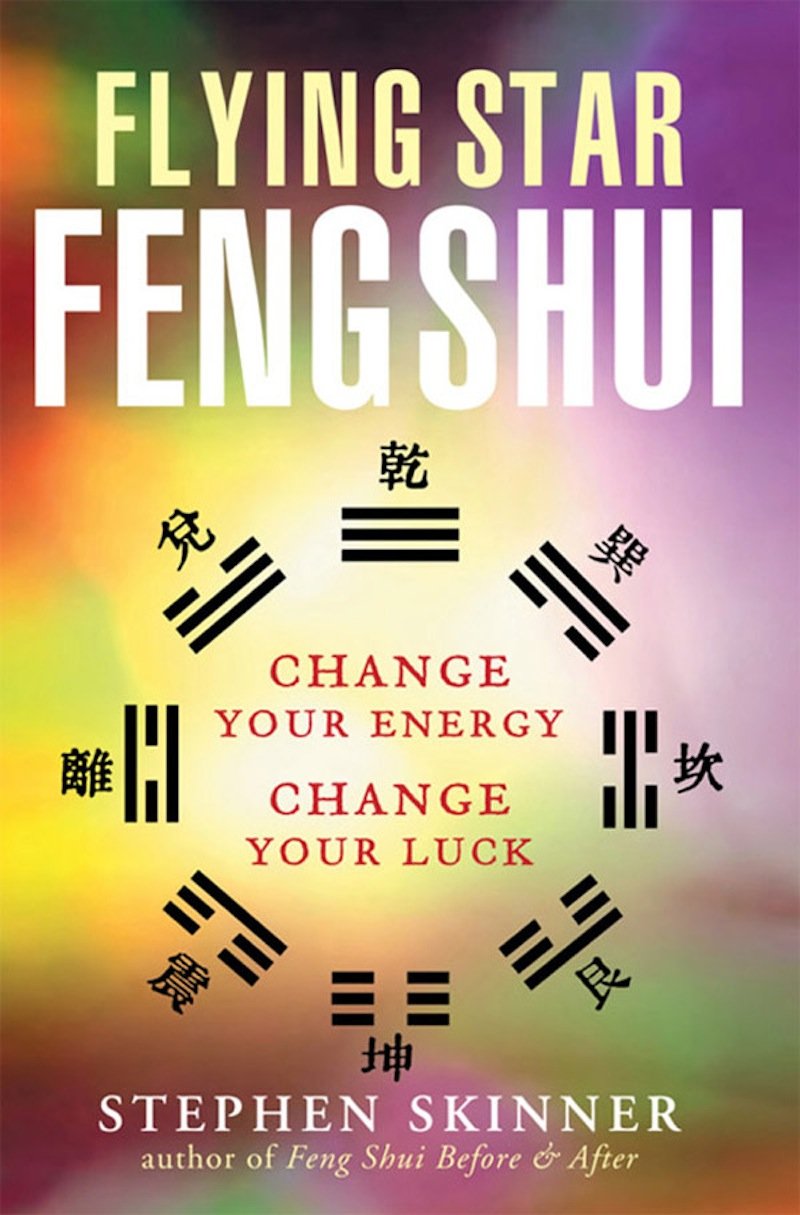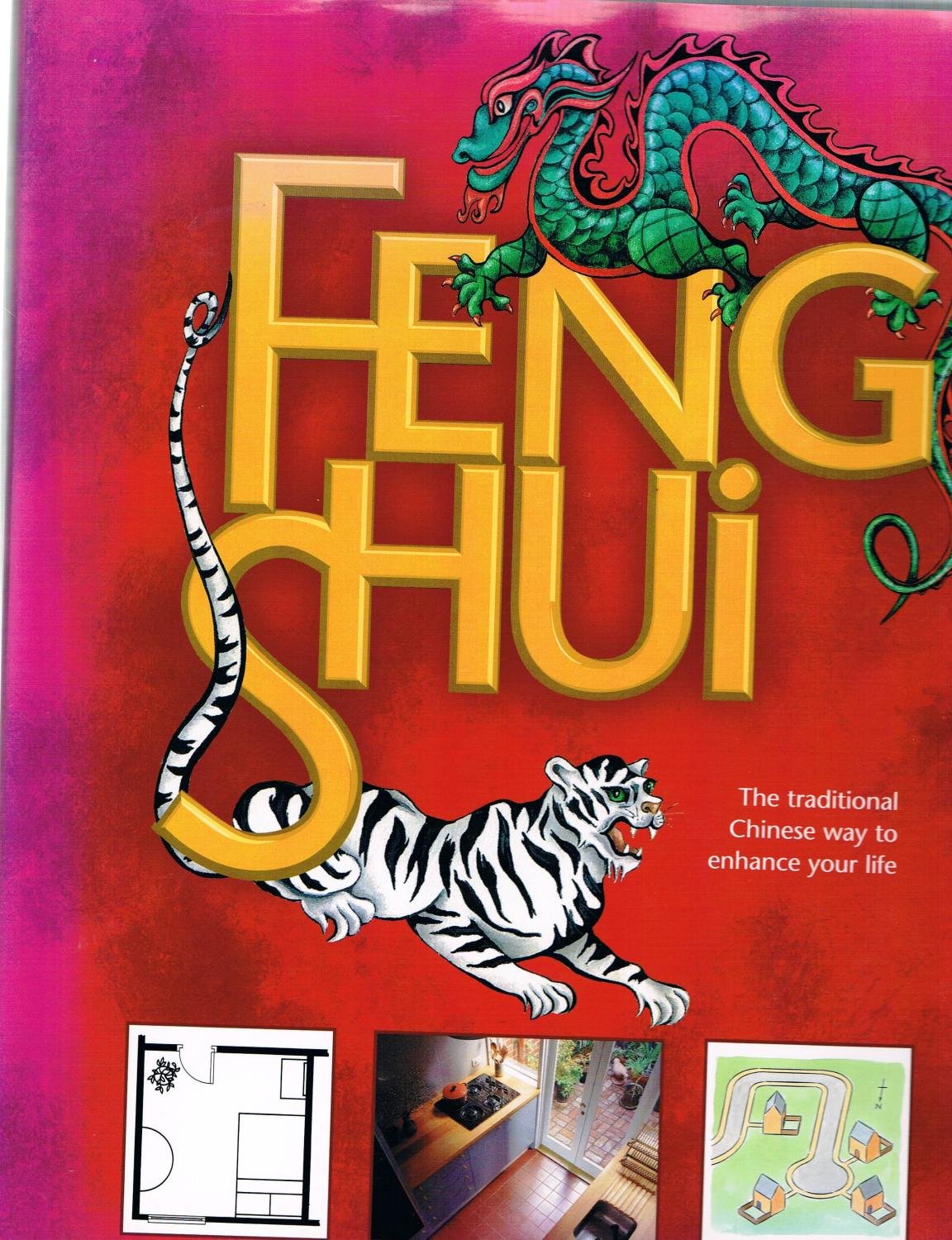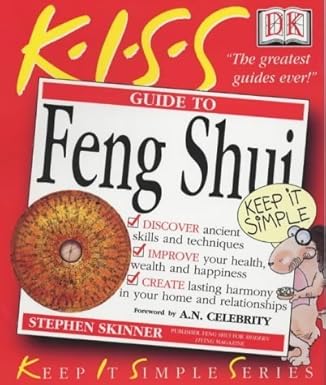The constitution of ancient Feng Shui (Wind-Water) as a physiognomy or geomantic art aims to explore and investigate the physical landscape of nature and how the specific environmental configuration impacts all living things. Even more revealing is a direct link between the conspicuous (visible) designs of the landscape and the abstract and ominous workings of qi (invisible cosmic force or energy).
Although one may not necessarily be able to see energy with the naked eye, there is indeed a source that fuels all life forms. You can feel this ever-present life force, which either benevolently enhances and improves life or maliciously depletes and impairs life.
Therefore, the purpose and application of Feng Shui is to understand how the visible and invisible forces come together, so that one can calculate and interpret the inherent energy structure of a particular home or piece of land, and make the appropriate recommendations for how to manipulate (harness or avert) this information to attain the best results.
This is, by and large, the definition of Feng Shui, and partly why Feng Shui is called an ancient art and science.
To master the art of Feng Shui, one must also learn and assimilate other insights and modalities including mathematics, astronomy, geography, history, Chinese philosophy, and design, just to name a few. Feng Shui is a body of knowledge. It is a logical and systematic methodology that is also multifaceted. There is no short-cut. Any attempts to over-simplify it dilute its essence, and lose any true value that makes Feng Shui a compelling and life-changing tool.
Feng Shui may be an old science but it remains relevant and viable in modern life. As life becomes more complex, the pursuit of happiness endures. The fundamental desires of humans are to be happy and healthy; to attain fulfillment, satisfaction, and goodwill. This is why Feng Shui remains one of the most cherished types of knowledge, especially by those who are looking for more ways to cultivate inner peace and sanctity.
Feng Shui Today
In the last two decades, there has been a surge of interest in Feng Shui in the West, which continues to rise as more people are looking for new and unique ways to improve their overall sense of happiness and wellbeing.
However, the sudden craze and enthusiasm for Feng Shui has been a mixed blessing. While the growth and fervor can be credited with initiating people’s curiosity to want to learn more about it, the lack of regulation and control have contributed to a widespread disease I call Fake Feng Shui.
This phenomenon has created a tremendous amount of confusion, inconsistency, and fallout, which in turn have done harm to the profession and to the idealistic framework of what makes Feng Shui real.
The cultural paradigm of the West is fundamentally different than that of the East. The approach to life and self-awareness is a constant dance between the two. And while the West does its best to meet the East (and vice versa), it still takes a good amount of education, pragmatism, and sometimes compromise to understand one another.
As Chinese Feng Shui made its way to the West, especially in the 1970’s after the end of the Chinese Cultural Revolution, the original practice morphed into something totally different in order to better suit and accommodate the ways of the West. With this, many of the authentic core principles, critical applications, and techniques were lost. I refer to this as an unfortunate case of “lost in translation.”
Look at the evolution of yoga as an excellent example. Yoga is a Hindu spiritual and ascetic discipline, a part of which, including breath control, simple meditation, and the adoption of specific asanas (body postures), is used to support and vitalize the physical and spiritual health. Like Feng Shui, yoga has grown into a trendy thing to do. I recently saw the latest trend of “beer yoga” where you can drink some beers and do yoga! Admittedly, it is a provocative marketing gimmick to get people to do yoga!
Clearly, everything old eventually experiences some form of a facelift as it attempts to align with or reinvent itself for a new time. But often with these transformations, many important parts of the knowledge and underlying thoughts around it are inadvertently misplaced, removed, or lost forever.
Feng Shui is no exception to this dilemma.
Today, Feng Shui Fashion, Feng Shui Wallets, Feng Shui Cars and Airplanes, and Feng Shui Facials are only part of a long list of bizarre—and laughable—gimmicks that all have nothing to do with real Feng Shui. This kind of transformation is not only a ruse, but it is irresponsible and dangerous.
These days, there is no shortage of uber-colorful books on Feng Shui (beautiful to look at but not much substance) or a plethora of do-it-yourself 1-2-3 Feng Shui “tips” on the internet superhighway. The ease of spreading information means people don’t need to make much effort towards authenticity. Nobody is held to the highest level of accountability, so anybody can spout off anything that sounds remotely Feng Shui-y with the simple click of a computer mouse—with zero repercussions or penalty.
It is a cinch to regurgitate the routine script that Feng Shui is not magical, esoteric, a religious or spiritual practice, and that it should not be feared or doubted because everyone can benefit from it. To be perfectly frank, the hardest and perhaps most energetically exhausting part is the consistent and persistent need to call out (and hold responsible) the culprits responsible for making Feng Shui so confusing.
The mission, if you will, is to not only penetrate and win over the skeptics, but mostly to debunk a myriad of false teachings that have contaminated the wisdom—and identity—of Feng Shui.
Thus, in order to pinpoint and help clarify areas of what makes Feng Shui real and not real, allow me to outline the origin of Feng Shui and how modern-day’s pursuit of easy (or lazy) quick-fixes to happiness has dramatically altered the blueprint of this thousands of years old ancient wisdom, and mutated it into a fashionable fad made for comedy TV.
For this exercise specifically, I will refer to the Chinese Feng Shui as “Classical” and modern Feng Shui as “Western.”
Classical Feng Shui
Classical Feng Shui is archaic, and it is the original Eastern practice that originated in China. Like yoga, Ayurveda, or Chinese Medicine, Classical Feng Shui hails from a long and sophisticated line of interdisciplinary bodies of knowledge and philosophy. The foundation and philosophical thoughts on Chinese cosmology (Yin and Yang) and the Five Elements date back to 4500 B.C., to the time of a man named Fu Xi.
Because Classical Feng Shui is essentially a macro or “outward-in” practice, it considers and emphasizes the importance of the external landscape first, extending beyond the four walls of a house or even before considering the building structure itself.
To further dissect this, one must also understand the branches of Classical Feng Shui. Granted, learning the branches alone can get complicated because different schools place emphasis on different applications and techniques. To streamline this introduction for now, you can consider Classical Feng Shui as a two-part system that can be classified as Form School Feng Shui and Compass School Feng Shui.
Let’s break down the two systems.
1. Form School Feng Shui
Forms, or Landscape Feng Shui, is thought to be the oldest Feng Shui system, emphasizing natural landforms. Landforms refer to all the visual aesthetics in the environment: mountains, hills, terrain, topography, lakes, rivers, bodies of water, as well as man-made objects, such as buildings, bridges, towers, and roads. Think geography and topography.
You can even think of Form School Feng Shui like a real estate transaction. For instance, where the property is located (zip code, neighborhood, or city) has a direct impact on the value and monetary worth of the building or land. In other words, the fancier the area, the higher the dollar amount. Landscape Feng Shui is also the same. The energy source (or Feng Shui strengths and weaknesses) of a house has an explicit relationship with where it is and what surrounds it.
Many ill-informed people think that Feng Shui is just about rearranging some furniture, having a red door, clearing your clutter, or placing two love ducks in a love corner. This thought process is rudimentary, and sometimes outright wrong. Classical Feng Shui is about observing, examining, calculating, and evaluating the geographic composition of the land in order to identify and select auspicious land sites where vital energy is located.
In real estate, a house can have all the bells and whistles but if it sits in a run-down, abandoned side of town, surrounded by other distressed properties, no amount of gimmick will help the value of the home. Similarly, in Feng Shui, an aesthetically beautiful house is a waste if the energy of the surrounding landscape is not favorable or supportive. Remember that. This is what makes it a macro or large-scale application, lending its identity as geomancy.
Because Form School Feng Shui is primarily an external assessment, this system is especially useful if you are looking for a plot of land to build a home, office building, school, or landmark long before you begin to consider the architectural and interior design of the property.
As time progresses, people and their homes evolve. A well-trained Feng Shui practitioner makes use of all available resources, tools, and techniques to assess the qi quality of the environment. There is no such thing as the perfect house in a perfect environment for all of eternity. We use Forms to assess the qi quality surrounding a property for its long-term and long-lasting effects to withstand the dynamic changes of time.
2. Compass School Feng Shui
While Form School focuses on the visible aspects of nature and is more enduring with time because mountains and waters are static structures, Compass School focuses on appraising the invisible aspects of energy that cannot be seen with the naked eye.
This concept includes the idea that, just like the exterior environment, time and directional energies also have a direct relationship and equally-important influence on the application and use of Feng Shui. Think of it like a formula: Landscape + Time + Direction = Feng Shui Results.
For this reason, and perhaps what makes Classical Feng Shui more compelling and unique, is the use of a Luo Pan (Feng Shui Compass). This divination device plays a critical role in deriving and calculating key information required to assess the Feng Shui. Its function, purpose, and entire existence is to gather essential data. Without the Luo Pan, there is no Feng Shui because one cannot accurately make any judgment or remarks about how qi will impact the livelihood of those living on the land or inside the house.
Imagine an ice skater without skates, a violinist without a violin, a doctor without a stethoscope, or a basketball player without a basketball. Classical Feng Shui is and should be viewed in the same way. There is no such thing as a Feng Shui Consultant without a Luo Pan.
In comparison, Compass School is more mysterious and complex because this system attempts to calculate and explain something totally abstract and more fluid. It elaborates on two specific and indivisible facets. They are: 1) time, and 2) space.
Time
There is no simple definition of time other than it is something we know to exist in our human life force. We experience time in our bodies and in the seasons. Without getting too scientifically technical, time is simply a way to measure life events on earth. And as time passes, energy changes with it. Life is a continuous motion of ups and downs, running through its course like the cycles of the seasons. It begins, ends, only to begin again. That’s why Feng Shui is not a one-time event. Just because you did the Feng Shui does not mean it remains the same forever.
Compass School aims to calculate the cycle of time in order to forecast and predict the Feng Shui cycle—or behavior—of a home. Time is one key piece of information in a formula.
Space
The magnetic Lo P’an is an intricate and sophisticated device that deserves a whole book unto itself! (See Stephen Skinner’s Guide to the Feng Shui Compass: A Compendium of Classical Feng Shui.)
This instrument is vital for obtaining a second key piece of information in a formula: that is, the direction of the subject. For a house, the Luo Pan calculates directional influences in 15-degree intervals (or 5 degree-intervals for graves). Precision and accuracy is paramount. Without it, it is impossible to complete the formula to assess the Feng Shui!
Time and space emphasize the use of formulaic calculations—rather than the external physical landforms—to determine how energy affects you and your home. Therefore, it is considered a more dynamic practice. It has quick, short-term effects, prompting the Feng Shui fortune of a house to continuously change as time passes (i.e., the quality of qi changes with time).
It is important to emphasize that Forms and Compass Schools are not necessarily autonomous and separate; rather, they should be viewed as two interconnected systems of Feng Shui that need to work in tandem in order to experience and benefit from the full effects.
Grand Master Raymond Lo once quipped that Form School should be viewed like computer hardware, and Compass School is the software. Together, they are effective and powerful. Always remember the formula: Landscape (Form) + Time (Compass) + Space (Compass).
Classical Feng Shui is a methodical and unbiased system that is also strategic, analytic, and deliberate. You’ll see below how the Westernized diffusion of the knowledge and the introduction of Black Hat Feng Shui has minimalized the sacredness and compromised the integrity of what makes Feng Shui a true and legitimate discipline.
Evolution of Happy
The Western approach to the pursuit of happiness is entrenched in instant gratification along with the focus on tangible rewards. It is a culture of masculine energy: fast, needed-it-done-yesterday, and I-don’t-believe-it-unless-I-can-see-it. We want to be happy yet we are not up to the task—or don’t have the patience and faith—to put in the tough, grimy work. The solution? Make it simple, fast, tangible, no fuss, and voila! Instant happy. And you have mass appeal.
While I could easily write an entire paper on the social and cultural chasms between the East and West, I’ll refrain. Instead, I’ll focus more on why the human desire for happiness in the West has contributed to the slow deterioration of Classical Feng Shui.
What is the American way? We opt for quick-fixes, like to have information be readily accessible and solution-based, and want to do everything by ourselves. Look at HGTV. This is a cable television channel dedicated solely on home improvement how-to’s. Self-help and how-to’s are everywhere. Couple that with the capitalistic view on measuring success (or happiness) with making a lot of money.
Hit any book store and you’ll see beautiful books adorned with impressive, jaw-dropping pictures of houses, living rooms, and bedrooms, enticing you that you to re-create or mimic the images in your own space, with the promise that one can read a book front-to-back and master the art of Feng Shui. The invasion of Feng Shui books is another indicator that it is hitting mainstream.
“The book Feng Shui for Dummies certainly lived up to its name while sealing the modern fate of Feng Shui. Indeed, we have now completely “dumbified” Feng Shui”
While mass appeal is a strong indicator for sparking genuine movement, it also has its drawbacks. When you cut corners in order to make the information more marketable, you end up missing out on benefiting from the authentic wisdom that makes Feng Shui a powerful tool, and end up becoming more confused.
You can’t take a pill and expect a six-pack abdomen without the physical exertion of hitting the gym and sweating it out. The application of Feng Shui is the same. You cannot achieve harmony and tranquility (or “good” Feng Shui) by relying on short cuts, placing a few tchotchkes inside your home, using the watered-down version of Feng Shui and then exclaiming it didn’t work. Feng Shui is not a simple science.
The emergence of Black Hat Feng Shui as “pop” Feng Shui is a direct result of this revelation. That’s why, when discussing the evolution of happy and Feng Shui together, one cannot ignore or dismiss the impact that Black Hat Feng Shui has on the perception—and misconception—of what Feng Shui is all about.
Black Hat sect Tantric Buddhism Feng Shui (BTB)
Black Hat Sect (BHS) is shorthand for Black Hat Sect Tantric Buddhism Feng Shui. This deserves its own section because it is one of the most commonly-used systems in the West, especially in the United States. I would roughly estimate that more than 80 percent of so-called Feng Shui practitioners use the Black Hat approach.
This style, unlike Classical Feng Shui’s centuries-old history, was only developed around the 70s by the late Chinese Grand Master Thomas Lin Yun. Black Hat exploded in the 90s when books, mainstream TV programs, and up-and-coming Feng Shui celebrities started to openly showcase and popularize Feng Shui as a feel-good, do-it-yourself thing to do.

While Black Hat honors some of the Eastern heritage of the traditional practice, one of the key divergences is that it does not consider the use of a compass. This simplification alone essentially eliminates it from ever being considered Feng Shui—period. Instead, Black Hat uses the Eight Aspirations Map (often erroneously referred to as The Bagua Map) as its primary tool and is otherwise not a geomantic system.
The Map emphasizes dissecting the floor plan into nine equal grids, each representing an aspect of life, such as the love corner, wealth corner, health corner, and so on. This outlay makes no reference to the external environment, consideration for the property’s location, house facing direction, or time, as an absolute requisite.
Since Black Hat is a non-directional practice, the Map is laid out the same way for all types of properties. Instead of orienting the house with the Feng Shui compass, the Map is oriented to the entryway in any room every time. As you can imagine, it relies less on directional energies, landforms, and astrology than Classical Feng Shui. The internal orientation of the door is what matters here.
What’s even more alarmingly different is that many Black Hat Feng Shui practitioners and enthusiasts also say the practice is a spiritual and holistic experience, and sometimes even a religious one. It combines the art of meditation by quieting and centering the mind in order to intuitively feel the space and its energy. Many also perform rituals, chants, mantras, and other affirmations to bless their dwellings or to “call in” the qi. The school combines the essence and philosophy of Tibetan Buddhism, Taoism, Confucianism, holistic healing, transcendentalism, divination, psychology, and Classical Feng Shui. Clearly, there’s a lot going on here.
While Black Hat may be popular in the West, it often gets ridiculed and challenged for its methods in the East. One of the main criticisms of Black Hat is that it was invented to make Feng Shui “easy” and to fit the western cultural mindset so as to reach mass appeal. Classical Feng Shui, essentially a niche, is difficult to sell by comparison because it is less flashy and can get too technical to appeal to a wider audience. That’s why you don’t see many Classical Feng Shui books sold at commercial bookstores. They only sell to a small and specialty group of audiences.
Nothing about Black Hat in its techniques, application, and calculation have relevance to Classical Feng Shui. Even ideas borrowed from Classical Feng Shui have their share of inaccuracies. One obvious blunder is labeling the color of the Water Element as blue when in fact the correct color for the Water Element is black. And there are many more.
The practice itself is also more subjective to the person performing the evaluation because many Black Hat practitioners are often deeply spiritual and/or religious individuals, blending or incorporating their personal beliefs into the practice of Feng Shui. This is one of the reasons Feng Shui gets mislabeled as a religion rather than the logical, metaphysical science it is.
I must say, despite the grievances around the rise of Black Hat Feng Shui, I do attribute one favorable factor that came out of its emergence. As Westerners are looking for new ways to happiness, at least Black Hat achieved one critical success: mass appeal. As the term Feng Shui reaches more people easily and faster than ever before, Classical Feng Shui can piggy-back off this expedition and find its place in the West.
“I wholeheartedly invite you to embrace Classical Feng Shui in your journey to happiness—and change your life forever!”
Conclusion
The journey to attaining happiness is possible. You’re reading an article on Feng Shui because it has sparked your curiosity, incited a change within you, or invited you to see the world around you in a whole new light. If you are genuinely interested in incorporating Feng Shui into your life, and having some control over the state of your happiness and personal wellbeing, then it is important to recognize that there is such a thing as good (authentic) Feng Shui and bad (fake) Feng Shui.
Because no matter how complex and sophisticated Classical Feng Shui may be to grasp at first, it is the authentic practice, and the purest form. I wholeheartedly invite you to embrace Classical Feng Shui in your journey to happiness—and change your life forever!

SPONSORED










An impressive share! I’ve just forwarded this onto
a co-worker who had been conducting a little homework
on this. And he actually ordered me breakfast due to the fact that
I found it for him… lol. So allow me to reword this….
Thank YOU for the meal!! But yeah, thanks for spending the time to discuss this topic here on your blog.
Hi there friends, its a fantastic article very educational and well defined, keep it
up.
I was looking for a good post that described the difference between east and west, modern and old.. and finally found one with the facts.. Thank you.
Thanks Amanda, this is the goal of FSML to deliver the facts and explain FS to our readers.